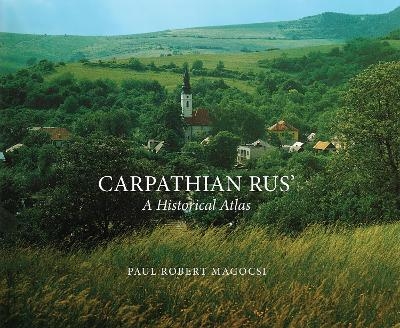
Carpathian Rus'
University of Toronto Press (Verlag)
978-0-7727-5115-7 (ISBN)
Located at the exact geographic center of the European continent, and known by many as "the heart of Europe," Carpathian Rus’ is a quintessential borderland, where geographic, political, ethnolinguistic, religious, and socio-climatic borders converge. In the midst of this diversity, the main population has traditionally been comprised of Carpatho-Rusyns, a stateless people who have interacted with other peoples living within their midst: Hungarians/Magyars, Slovaks, Poles, Romanians, Jews, Germans, Roma/Gypsies, and, in more modern times, Czechs, Ukrainians, and Russians.
Providing a firm understanding of the complexities of this fascinating space, Carpathian Rus’: A Historical Atlas is the first text in any language to discuss this historic land and its local population. Including 34 chapters with full-colour maps that trace, in chronological order, developments not only in the historic territory of Carpathian Rus’ but also in the larger surround area of central Europe. Accompanying each chapter is an explanatory text to provide the geographic, ethnolinguistic, cultural, and historical context of the accompanying map.
Paul Robert Magocsi is a professor of history and political science and the John Yaremko Chair of Ukrainian Studies at the University of Toronto.
A Note on Geographic and Place Names
Introduction
1. Carpathian Rus’: a Borderland of Borders
2. Geographic Features of Carpathian Rus’
3. Ethnographic Divisions in Carpathian Rus’
4. Archeological Sites in the Upper Tisza and Lemko Regions
5. Central Europe, 5th Century
6. Central Europe, ca. 750
7. Central Europe, 9th Century
8. Early Medieval Kingdoms, ca. 1050
9. Hungary in the 11th Century
10. Carpathia Rus’ 13th-14th Centuries
11. Hungary and Poland, 14th-15th Centuries
12. Central Europe, ca. 1570
13. Transylvania and Royal Hungary, 17th Century
14. Austria and Hungary, 18th Century
15. The Greek Catholic Church in Carpathian Rus’ Before World War I
16. The Austrian Empire, 1848-1849
17. The Austro-Hungarian Empire, 1867-1914
18. Carpathian Rus’, ca.1900
19. Southern Hungary, ca. 1900
20. Carpatho-Rusyn Communities in the United States
21. World War I in the Carpathians
22. Carpatho-Rusyn Councils and Republics, 1918-1920
23. Political Claims in Carpathian Rus’, 1918-1919
24. Carpathian Rus’, 1919-1938
25. Religious Institutions in Carpathia Rus’, 1935
25. Magyars and Jews in Interwar Subcarpathian Rus’
27. Other Peoples in Subcarpathian Rus’
28. Subcarpathian Rus’/Carpatho-Ukraine, 1938-1939
29. Central Europe during World War II
30. Carpathian Rus’ at the Close of World War II, 1944-1945
31. Central Europe after World War II
32. Carpatho-Rusyn Diasporas after World War II
33. The Vojvodina, Srem, and the Banat Today
34. Carpathian Rus’ Today
Map Sources
Index
| Erscheinungsdatum | 10.10.2017 |
|---|---|
| Zusatzinfo | 34 colour maps |
| Verlagsort | Toronto |
| Sprache | englisch |
| Maße | 308 x 235 mm |
| Gewicht | 700 g |
| Themenwelt | Geisteswissenschaften ► Geschichte ► Hilfswissenschaften |
| Geisteswissenschaften ► Geschichte ► Regional- / Ländergeschichte | |
| ISBN-10 | 0-7727-5115-3 / 0772751153 |
| ISBN-13 | 978-0-7727-5115-7 / 9780772751157 |
| Zustand | Neuware |
| Haben Sie eine Frage zum Produkt? |
aus dem Bereich


